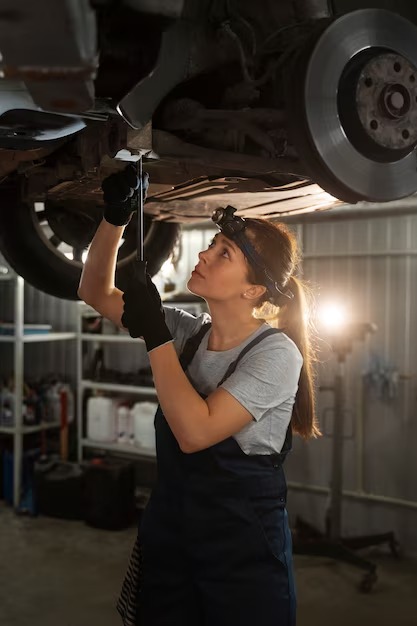Importance Find Air leak of Regularly Check for Fuel Line Pipes
When it comes to maintaining an automobile, various components play crucial roles in ensuring smooth operation and long-lasting functionality. One often-overlooked aspect involves the intricate system that delivers energy to the engine, directly influencing how well the machine runs. Understanding the nuances of this system can lead to greater reliability and efficiency, ultimately enhancing the driving experience.
Several elements contribute to the effectiveness of this delivery mechanism, and regular oversight is vital in preventing potential issues. Identifying wear, tear, and blockages in the channels responsible for transporting energy not only preserves the integrity of the vehicle but also promotes overall safety on the road. With careful inspections, drivers can avoid costly repairs and enjoy uninterrupted journeys.
In this exploration, we will delve into the essential aspects of maintaining these critical channels, highlighting best practices and key indicators of condition. By familiarizing oneself with these components, both novice and seasoned drivers can take proactive steps towards ensuring that their vehicles operate at their best, regardless of the situation.
Importance of Fuel Pipe Maintenance
Ensuring the functionality and reliability of crucial components in a transportation system is vital for seamless operation. Neglecting the upkeep of particular elements can lead to decreased efficiency, unexpected breakdowns, and increased costs. This section underscores the significance of regular attention to specific conduits that transport essential energy sources to the engine.
Benefits of Regular Upkeep
Maintaining these conduits not only enhances the overall efficiency but also contributes to the longevity of the entire mechanism. The following points illustrate why consistent attention is essential:
- Prevention of Leaks: Regular inspection helps detect potential leaks early, minimizing the risk of hazardous situations.
- Optimized Efficiency: Well-maintained conduits ensure that energy sources are delivered efficiently, reducing waste and improving fuel economy.
- Extended Lifespan: Routine care can significantly prolong the life of the system, preventing costly repairs and replacements.
- Enhanced Performance: Proper functioning of these conduits contributes to smoother operation and responsiveness of the machinery.
Key Maintenance Practices
Implementing certain practices can greatly enhance the reliability of these transport channels:
- Regular Inspections: Frequent checks allow for early identification of wear or corrosion.
- Cleaning: Keeping the conduits clean prevents the buildup of contaminants that can hinder flow.
- Timely Replacements: Replacing worn or damaged segments is crucial to maintaining overall integrity.
- Monitoring: Keeping an eye on performance indicators ensures prompt response to any irregularities.
By prioritizing the maintenance of these transport systems, one can ensure better efficiency, safety, and longevity within an overall operational context.
Identifying Common Fuel Pipe Issues
Recognizing prevalent problems related to transport energy lines is crucial for maintaining efficiency and reliability during operation. Various signs can indicate that these essential conduits are not functioning as they should, potentially leading to more significant complications. Proactively identifying these issues can help ensure smooth and uninterrupted driving experiences.
One frequent concern is leaks, which can often be spotted by spots of liquid underneath the automobile or a drop in performance. Another indicator could be a noticeable decrease in acceleration or power, suggesting that the energy flow is obstructed or insufficient. Additionally, unusual noises, like hissing or sputtering, might signal irregularities in the transport system, demanding immediate attention.
Corrosion is another factor to be wary of; it can deteriorate the integrity of the lines and cause failure over time. Inspecting for cracks or bulges can also reveal potential vulnerabilities that may lead to ruptures. Keeping an eye on these characteristics not only enhances safety but also contributes to a more enjoyable driving experience.
Tools Needed for Inspection
Having the right instruments is crucial when assessing the condition of automotive fluid conduits. The appropriate tools not only streamline the process but also ensure accuracy in diagnosing any potential issues. Familiarity with the essential devices can significantly enhance the effectiveness of your examination.
First, a reliable set of wrenches and sockets is necessary for loosening and tightening connections. These tools allow for easy access to junctions that may require inspection or maintenance. Additionally, a pressure gauge enables you to monitor the system’s integrity by measuring fluid pressure levels.
Another important tool is a visual inspection mirror, which helps in examining hard-to-reach areas. This device aids in spotting wear, leaks, or corrosion that could compromise the integrity of the fluid delivery system. A flashlight will also be beneficial for illuminating dark spaces, providing a clearer view of components.
Furthermore, a multimeter can assist in evaluating electrical connections, ensuring that sensors associated with the fluid system are functioning correctly. Lastly, a clean cloth or absorbent materials should be on hand to wipe away any spills or residue, maintaining a tidy workspace and providing clear visibility during inspection.
Step-by-Step Inspection Process
Conducting a thorough evaluation of critical components is pivotal for ensuring smooth operation in an automobile. This process involves a systematic approach that highlights various checks, helping to identify potential issues before they escalate into more significant concerns.
The following steps outline a comprehensive evaluation process:
| Step | Description |
|---|---|
| 1 | Begin by preparing the workspace, ensuring the engine is turned off and cool to the touch. |
| 2 | Visually inspect the components for any visible signs of wear, damage, or leaks. |
| 3 | Check for any loose connections or fittings that may need tightening. |
| 4 | Carefully examine the surface for cracks, corrosion, or deterioration that could impact function. |
| 5 | Use appropriate tools to test pressure levels, ensuring they meet the manufacturer’s specifications. |
| 6 | Perform a thorough cleaning of any residue or buildup that may interfere with operation. |
| 7 | Reassemble components and conduct a final check for secure installation before starting the engine. |
Following this systematic sequence not only aids in maintaining functionality but also enhances the longevity of the automotive system involved.
Signs of Fuel System Problems
Identifying issues within the energy supply system is crucial for the reliable operation of any automobile. Anomalies in this area can lead to significant performance drops and may compromise safety. Being aware of the common indicators of trouble can help prevent more serious complications down the line.
| Indicator | Description |
|---|---|
| Engine Stalling | A sudden shutdown while driving can signal irregularities in energy delivery. |
| Difficulty Starting | Struggles to ignite the engine may imply issues with the supply mechanism. |
| Poor Acceleration | A sluggish response may indicate restrictions or blockages in the flow. |
| Strange Noises | Unusual sounds from the engine, such as sputtering, might point to underlying troubles. |
| Unpleasant Odors | The smell of gasoline can suggest leaks within the system. |
Timely attention to these signs can help maintain the functionality and safety of the automobile. Regular inspections and diagnostic checks should be part of routine maintenance to ensure smooth operation.
How to Replace Damaged Fuel Pipes
Replacing compromised conduits that transport essential fluids within your automobile is a critical task for maintaining its efficiency and reliability. Addressing this issue promptly can prevent larger problems and enhance the overall experience of owning your car.
Follow these steps to ensure the process is seamless:
- Gather Necessary Tools:
- Wrenches
- New conduits
- Sealing tape
- Protective gloves
- Safety goggles
- Prepare the Area:
- Ensure the engine is cool.
- Park the vehicle on a flat surface.
- Disconnect the battery to avoid any electrical issues.
- Locate the Affected Sections:
- Identify the damaged parts that need replacement.
- Mark connections to ensure correct installation later.
- Remove Old Conduits:
- Carefully detach the damaged sections using appropriate tools.
- Be cautious of any residual fluid; have a container ready for drainage.
- Install New Conduits:
- Position the new sections matching the original layout.
- Secure connections tightly to prevent leaks.
- Apply sealing tape where necessary for added protection.
- Reconnect Everything:
- Reattach the battery.
- Start the engine and check for any signs of leaks.
Regularly visiting a mechanic for inspections is advisable even after attempting replacements yourself, ensuring the longevity and safety of your automobile.
Q&A: Checking fuel pipes
What is the primary function of a fuel filter in a vehicle?
The primary function of a fuel filter is to remove impurities and contaminants from the fuel before it reaches the engine, ensuring optimal performance and longevity.
How often should you replace the fuel filter in your car?
It is generally recommended to replace the fuel filter every 30,000 to 50,000 miles, but this can vary depending on the vehicle manufacturer’s guidelines.
What are the signs that indicate a clogged fuel filter?
Signs of a clogged fuel filter include difficulty starting the engine, reduced engine performance, and unusual noises coming from the fuel pump.
Can a damaged hose affect the performance of the fuel filter?
Yes, a damaged hose can lead to fuel leaks or reduced fuel pressure, which can negatively impact the performance of the fuel filter and the overall fuel system.
Where is the fuel filter typically located in a vehicle?
The fuel filter is usually located along the fuel line, either near the fuel tank or close to the engine, depending on the vehicle’s design. To replace a fuel filter and its associated hose, you typically need a wrench set, pliers, a screwdriver, and possibly a fuel line disconnect tool.
How can you tell if the hose connected to the fuel filter is damaged?
You can check for damage on the hose by looking for cracks, leaks, or swelling. Any visible signs of wear may indicate that it needs to be replaced.
What role does the fuel filter play in maintaining engine efficiency?
The fuel filter plays a crucial role in maintaining engine efficiency by ensuring that only clean fuel enters the engine, preventing clogging of injectors and other components.
Is it necessary to use a specific type of fuel filter for different vehicles?
Yes, it is necessary to use a specific type of fuel filter designed for your vehicle make and model to ensure proper fit and function.
How does regular maintenance of the fuel filter and hoses contribute to vehicle longevity?
Regular maintenance of the fuel filter and hoses helps prevent issues such as clogs and leaks, which can lead to more serious engine problems and ultimately prolongs the lifespan of the vehicle.
What is the role of the fuel pump in a diesel engine?
The fuel pump is responsible for delivering diesel fuel from the fuel tank to the injectors, ensuring that the engine receives the necessary fuel to operate efficiently.
How can a clogged fuel pump affect a diesel engine?
A clogged fuel pump can restrict fuel delivery, leading to a loss of power and potential engine misfires, as the engine may not receive enough high pressure fuel.
What should you do if you suspect a fuel leak in your vehicle?
To find the leak, inspect the fuel lines and pay close attention to connections and rubber hoses for signs of leaking fuel or damage.
What are common signs that your fuel line may be damaged?
Signs that your fuel line may be damaged include visible leaks, a strong smell of diesel fuel, or the check engine light illuminating on your dashboard.
How does regular maintenance help prevent issues with the fuel system?
Regular maintenance reduces the risk of problems such as clogs or leaks, allowing for better fuel delivery and ensuring that the car runs smoothly.
What is the purpose of return lines in a diesel engine?
Return lines allow excess diesel fuel to flow back to the tank, helping to maintain proper fuel pressure and prevent overheating of the fuel system.
How can you identify leaks along the fuel line?
You can identify leaks by conducting pressure testing and inspecting the entire length of the fuel lines for any signs of rust or damage.
What happens if the fuel pressure regulator fails?
If the fuel pressure regulator fails, it may not properly pressurize the fuel system, leading to poor engine performance and possible misfires.
How do you shut off the fuel when working on a diesel engine?
To shut off the fuel, locate the valve on the fuel line and use a clamp to isolate the flow before proceeding with any repairs.
What should you do if your car runs poorly after replacing the fuel pump?
If your car runs poorly after replacing the fuel pump, it’s essential to check for any issues with the installation and ensure that you are using new fuel that fits your vehicle’s specifications.




